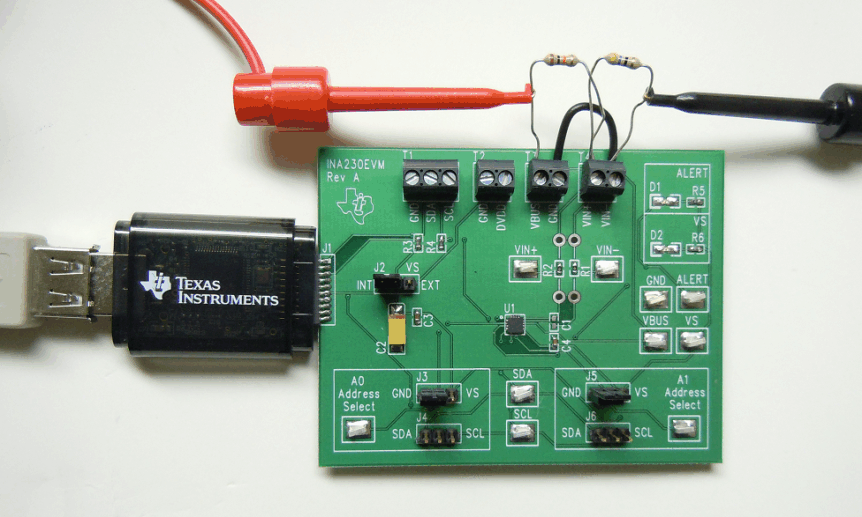SBOU124B march 2012 – july 2023 INA230
- 1
- INA230EVM Evaluation Board and Software Tutorial
- Trademarks
- 1Overview
- 2INA230EVM Hardware
- 3INA230EVM (Rev A) Hardware Setup
- 4INA230EVM Software Setup
- 5INA230EVM Software Overview
- 6INA230EVM Documentation
- 7Revision History
3.3 Connecting Power
After the EVM and SM-USB-DIG are connected, connect the desired VBUS and shunt configuration intended to be measured. Typically, setup involves a high- or low-side load and a shunt resistor across VIN+ and VIN–. The setup in Figure 3-1 represents a test scenario with a low-side shunt attached. This source for VBUS is not included with the kit, and the voltage may differ depending on your testing needs. The external power source is connected to the terminal strip T3.
Note: It is always necessary to connect
the power to the SM-USB-DIG Platform board before connecting the USB cable.
 Figure 3-1 Typical
Hardware Test Connections for the INA230EVM
Figure 3-1 Typical
Hardware Test Connections for the INA230EVM